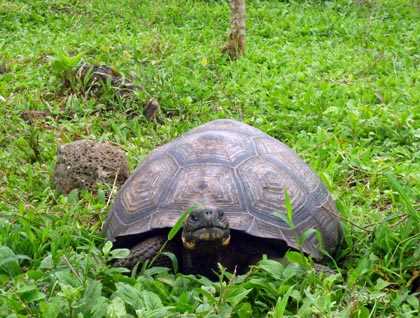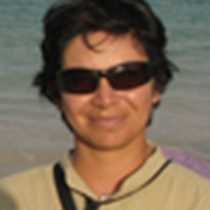We anchored last night in Academy Bay on the island of Santa Cruz. This island is the second largest in the archipelago, and it holds the largest human population. This morning we headed towards the main headquarters of the Charles Darwin Research Station; next to it we find the “Fausto Llerena” breeding center for giant tortoises.
This is where the Galapagos National Park raises young land tortoises, and it currently houses about 1,100 juveniles from different islands. These young animals will be repatriated at the age of four years old to the same island of their parent’s origin. Another reptile that was also raised here is the Galapagos land iguana. Over the years, their population has been increasing slowly, and by now this species is reproducing in the wild and in semi captivity, but this project still has further to go before their numbers are good enough.
After walking through the breeding center, we had some time to explore the town and to experience the way that the locals live. In the middle of the morning we had several options—some of our guests went on a bike ride to the highlands, and others went to a local school. We also had the opportunity to go to a local farm that produces sugarcane, coffee, and bananas; here these farmers also produce molasses, “aguardiente” which is strong alcohol made from sugarcane.
As we left the farm behind, we headed to a local restaurant for lunch in the highlands. For the afternoon we went to a different farm that lies next to the tortoises reserve; here we saw several Galapagos giant tortoises of all sizes. This is the time of the year when these animals are migrating to the lowlands, where they will mate and begin nesting, as the warm wet season has just begun. They seem to enjoy being at this property, as there is lots of vegetation to feed on, as well as fresh water to drink.
After a great day on Santa Cruz Island, we returned to our ship to enjoy the visit of a local group of musicians and dancers, to wrap up our day on Santa Cruz Island.







